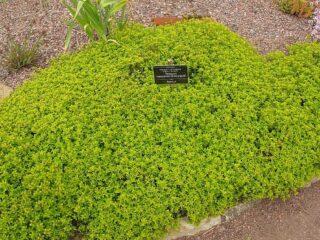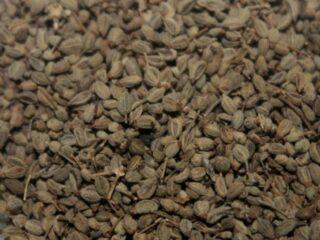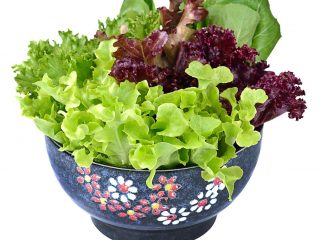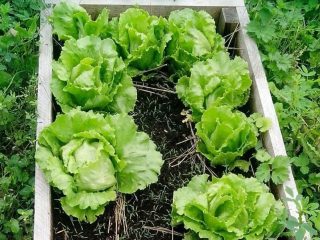Content
Amaranth microgreens are a healthy and tasty herb. It is of particular value in the early stages, during the formation of the second leaf. The plant contains a large number of macro- and microelements and vitamins. The crop is in demand in autumn and winter, when human immunity is at risk.
Amaranth microgreen flavor
Chefs note a nutty flavor, although barely noticeable. The herbal sourness contained in the juice of amaranth microgreens is much more noticeable. This harmonious combination is suitable for dressing fish and meat, vegetable salads, and appetizers like caprese.
Amaranth is presented in a varied assortment, as it is divided into several varieties. If the choice has not yet been made, the best solution would be to combine several varieties in one mix.
Beneficial properties of amaranth microgreens
The culture is considered to be gaining popularity, this is due to the fact that amaranth microgreens have significant benefits for men and women.

Some gardeners even set up their own mini-farms, in the hope that all family members will eat grass daily
According to studies, amaranth:
- improves blood circulation;
- cleanses the body of toxins;
- When taken regularly, it accelerates the growth of hair and nails;
- strengthens the immune system;
- stabilizes the gastrointestinal tract;
- rejuvenates the skin;
- gives a boost of energy;
- lowers the level of bad cholesterol.
This microgreen is considered the undisputed leader in its benefits for the body. The accelerated metabolism caused by consumption helps to cope with excess weight in women and build muscle mass in men.
Harm and contraindications
There is a category of people for whom consuming amaranth microgreens can be dangerous. The product should not be taken if:
- stones in the urinary and gall bladder;
- allergic reactions to the plant;
- acute cholecystitis and pancreatitis.
Experts advise making an appointment with your doctor to find out whether microgreens are beneficial in a particular case, and also ask about how to use the herb.
What is needed for germination
Growing amaranth microgreens does not require special equipment. No fertilizers or lamps are required for this. But some materials should still be prepared:
- gauze;
- vermiculite;
- perlite;
- garden soil;
- linen rug.
If your own soil is not very nutritious, it is mixed with peat and sand in a ratio of 4:4:1.

In the absence of any land, you can use humus, turf and peat in equal concentrations
How to germinate amaranth at home
Before planting amaranth on microgreens, you need to pierce the soil. To do this, use an oven, set the temperature to 100 °C. The procedure helps get rid of harmful microorganisms.
Seed consumption for trial growing is two tablespoons. The material is sown in rectangular containers lightly filled with soil. Therefore, the sides of the container should not be higher than 10 cm for normal illumination of the sprouts.
To grow microgreens for sale, packaging from champignons or berries is useful: it already has holes made in the bottom. The container is filled with earth and compacted. For 1 sq. cm no more than four seeds are planted. No need to sprinkle soil. Immediately after planting, amaranth microgreens are sprayed with a sprayer and placed in the shade for several days.
When grown indoors, seeds are sown less frequently, covered with half a centimeter of soil, and covered with film. One primer is enough for three cycles. It is more convenient to grow amaranth microgreens using gauze; if you don’t have it, bandages or cotton wool are used as an analogue.
Make sure to make holes in the container and place a bandage on the bottom in several layers. Fill the sprayer with warm water and irrigate the material (without flooding). Amaranth seeds are placed on a moistened base.
Sow so that they cover the entire perimeter. The farm is sprayed and covered with an additional layer of bandage, and re-irrigated.

After this, the container is covered and transferred to the windowsill.
Rules of care
Microgreens require some care. But it’s worth saying right away that it is minimal. The room must be maintained at a stable temperature of + 20 °C.As a rule, this is not a problem, especially in a room where a person lives. After planting, amaranth seeds are covered with film, not forgetting about daily ventilation.
The substrate is also regularly moistened. In order for microgreens to grow as quickly as possible, the windowsill must be sunny. It is advised to avoid direct light, as it is dangerous for young seedlings.
Amaranth grows very quickly, 5-7 days are enough. After the emergence of seedlings, the shelter is removed, and the plantings are moved to a more illuminated place - but, as before, avoiding direct rays. During the entire growing season, amaranth microgreens need to be watered twice. If the air is dry, humidify three times.
Every day the plant is inspected, ventilated and condensation is removed. If the seedlings died on the third day, there are reasons for this:
- moisture surplus;
- poor seed quality;
- wrong temperature.

In some cases, the plant may develop unevenly; only tall microgreens are eaten
As you can see, it is very easy to germinate amaranth for food. When the harvest is harvested, new seeds are planted in the old place, followed by others. Then the soil should be renewed, as it loses its properties. Accordingly, the substrate is replaced with a new one.
When to cut microgreens
The grass can be harvested after a week of cultivation. Tall microgreens are suitable for consumption - from 18 cm and more. When the top is cut off, side shoots are formed from the side shoots, making the plant lush. Seeds are collected in early autumn. The golden foliage will begin to fall by then.
How to use
Amaranth microgreens are useful on a gluten-free diet, since they do not contain the component of the same name.Even the seeds have culinary uses - for example, they are used to make flour and butter. Amaranth extract is used in some foods. The plant itself is added to hot dishes and salads. Roots, foliage, seeds and flowers have nutritional value.
Amaranth flour improves the taste of confectionery products. Cookies, rolls, and sometimes cakes are baked from it. The leaves are a unique ingredient used primarily as a supplement. Experts say microgreen foliage is even healthier than spinach.
Greens can serve as a side dish. Everything made from this herb is considered a dietary product. The most suitable composition of amaranth is whole milk. Microgreen seeds are consumed fresh, but they taste best after roasting. Doused with nut butter, they will please any gourmet.
In the southern United States, amaranth is eaten like popcorn. It is also used to make porridge, a traditional Mexican dish. The seeds remain somewhat harsh because they cannot fully boil, but they have a nutty flavor.

Porridge can be mixed with oatmeal, you get a unique mix that is tasty and nutritious
Amaranth microgreens are often used for sandwiches. It can be used as a supplement or as a complete ingredient. The sprout diet also includes the preparation of drinks - kvass, smoothies, cocktails.
Conclusion
Amaranth microgreens can become an indispensable ingredient. The product is incredibly healthy, tasty, and easy to get yourself. The cost of the seeds is small; it is enough to spend a little more than a week on growing - and a healthy salad will be on the table. It should be remembered that fresh shoots are juicier than old ones.








